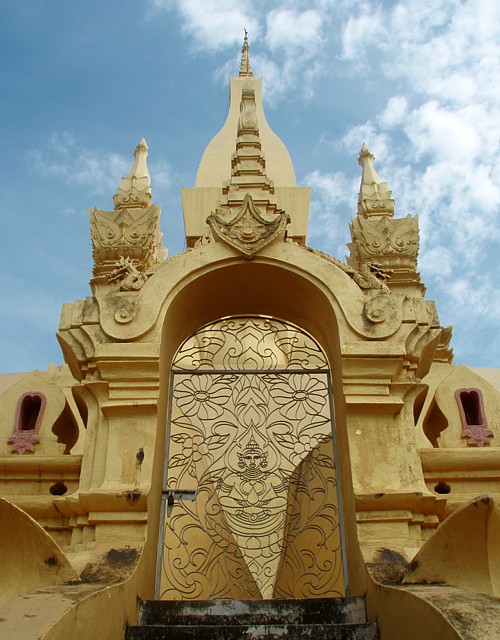
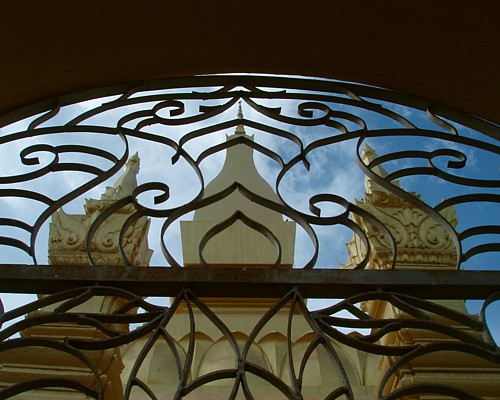
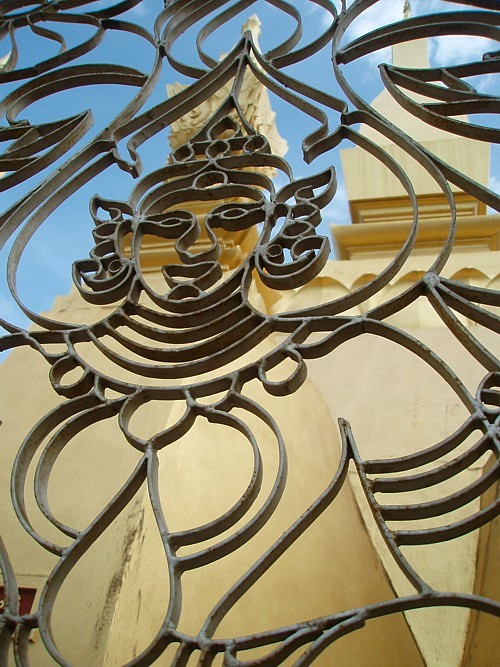
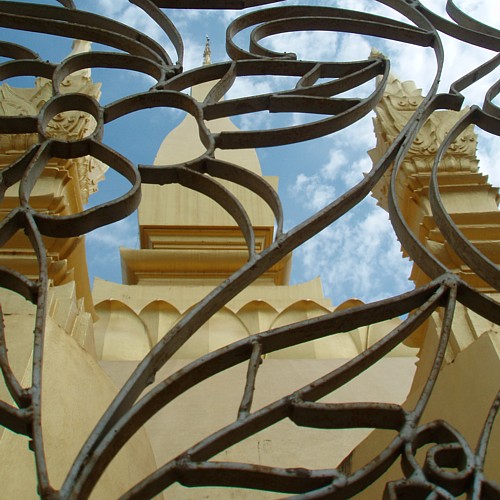
There are 30 of these 'spires' surrounding the actual stupa:
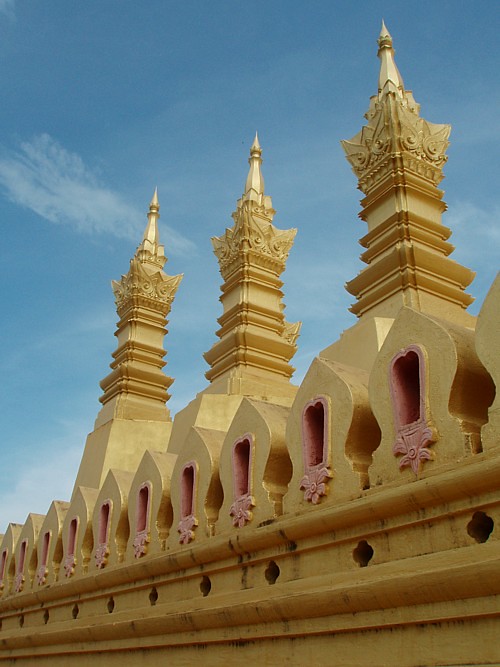
Each one represents a parami (บารมี barami - Thai, 波罗蜜 bo1 luo2 mi4 - Chinese), the perfection of a virtue that is part of the path to enlightenment:
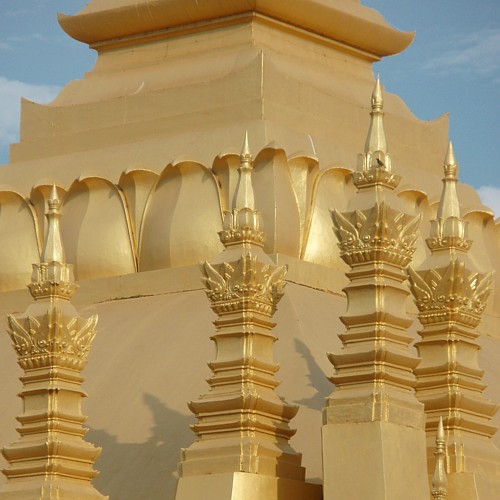
10 parami - dana (ทาน taan 布施, generosity - from which the practice of giving alms stems), sila (ศีล siin 持戒, virtue - observing the precepts), nekkhamma (เนกขัมมะ renunciation), panna (ปัญญา panya 智慧, wisdom), viriya (วิริยะ wiriya 精進, persistence), khanti (ขันติ 忍辱 patience/tolerance), sacca (สัจจะ satja 真实, truth), adhitthana (อธิษฐาน 決意 determination), metta (เมตตา 慈 loving kindness) & upekkha (อุเบกขา ubekkha 和捨, equanimity) - each practised at 3 levels (parami, upaparami & paramattha parami) gives a total of 30 parami. The 30 parami (timsa parami) are sometimes included in the chanting sessions at Theravada temples.
There are jatakas (stories of the past lives of the Buddha) that describe each of the 10 parami, & the marathon recitation of the Vessantara jataka (Maha Wetsandon chadok, about the generosity of Prince Vessantara) is the focus of the Boun Pha Wet festival in Laos & Isaan. The Pali words for the various parami feature in the 'ordained'/Pali names of many Theravada monks & nuns, & likewise some of the Chinese words in the ordained names of Chinese Mahayana monks & nuns. For laypeople, the Chinese words for the parami of panna & metta also appear as part of some Chinese first names, while a few of the Lao/Thai terms for the parami are popular in both first & family names - in particular 'khanti' for Lao people (e.g. Khantisouk), which is pretty apt given the amount of waiting that is involved in getting things done in Laos :P
Useless trivia - 波罗蜜 the Chinese term for parami sounds exactly like & is written almost exactly like 菠萝蜜 the Chinese word for jackfruit :P & it so happens that Theravada monks of the Thai forest tradition traditionally dyed their robes brown using the heartwood of jackfruit trees.
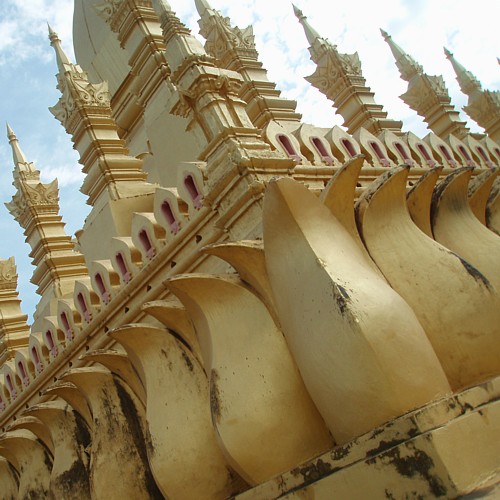
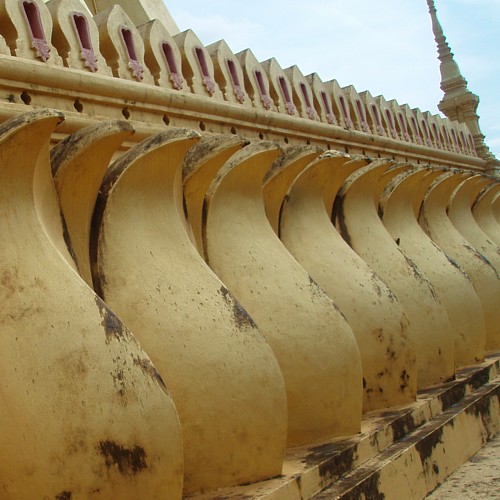
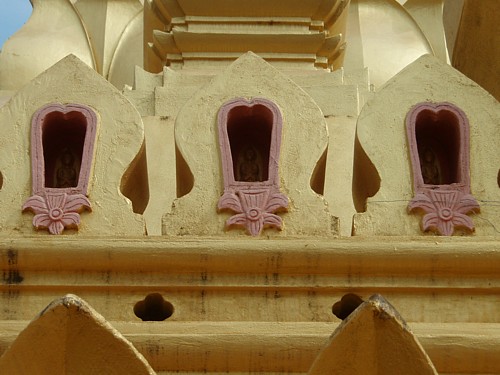
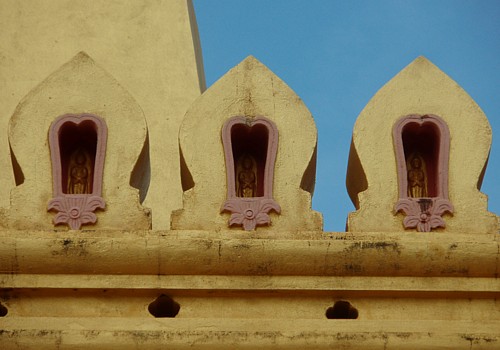
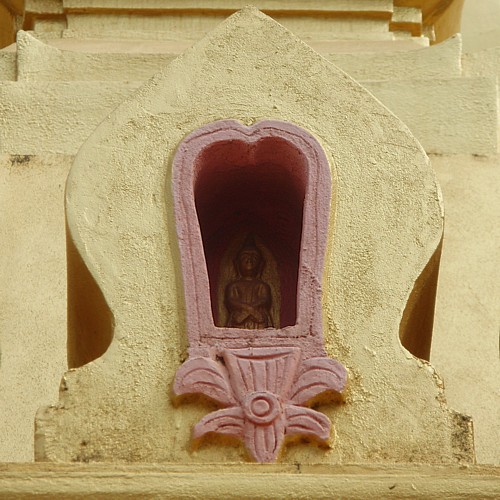


No comments:
Post a Comment